
Tekstil ve Konfeksiyon
Scope & Guideline
Exploring Innovations in Textile and Apparel Technology
Introduction
Aims and Scopes
- Textile Materials and Properties:
Research on the properties and performance of various textile materials, including natural and synthetic fibers, composites, and functional textiles. - Textile Manufacturing Processes:
Studies addressing the manufacturing techniques and processes used in the textile industry, including spinning, weaving, knitting, dyeing, and finishing. - Sustainability and Environmental Impact:
Research focusing on sustainable practices in textile production, waste management, and the environmental impact of textile processes. - Smart Textiles and Functional Applications:
Development and application of smart textiles that incorporate technology for enhanced functionality, including wearables and medical textiles. - Consumer Behavior and Market Trends:
Analysis of consumer preferences, behaviors, and trends in the textile and fashion industries, particularly in relation to sustainability and fast fashion. - Innovative Technologies in Textiles:
Exploration of emerging technologies including machine learning, artificial intelligence, and advanced materials in textile applications.
Trending and Emerging
- Sustainable and Eco-Friendly Practices:
There is a rising trend towards sustainability, with research focusing on eco-friendly materials, waste reduction, and sustainable production methods. - Smart Textiles and Wearable Technology:
An increasing interest in the development of smart textiles that integrate technology for functional applications, including health monitoring and comfort enhancement. - Machine Learning and AI in Textiles:
The application of machine learning and artificial intelligence for predictive modeling, quality control, and process optimization in textile manufacturing is gaining traction. - Biomaterials and Natural Fibers:
Research on the use of biomaterials and natural fibers for sustainable textile production is emerging, reflecting a shift towards environmentally friendly alternatives. - Consumer Behavior in Fast Fashion:
An exploration of how sustainability and fast fashion impact consumer purchasing behavior is becoming a significant area of focus, reflecting societal shifts in values.
Declining or Waning
- Traditional Textile Techniques:
Research on traditional textile techniques and handcrafts has diminished, as the industry shifts towards automation and modern manufacturing processes. - Basic Fabric Construction Studies:
The focus on fundamental studies of fabric construction methods has waned, with more emphasis now placed on advanced and functional textile applications. - Non-Fashion Textile Markets:
With the growing emphasis on fashion and consumer behavior, studies related to industrial textiles and non-fashion applications have become less frequent.
Similar Journals
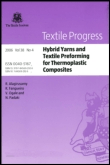
TEXTILE PROGRESS
Shaping the Future of Textiles Through Scholarly InsightTEXTILE PROGRESS is a premier academic journal published by Taylor & Francis Ltd, dedicated to advancing the field of textiles and materials science. With an ISSN of 0040-5167 and an E-ISSN of 1754-2278, this journal serves as a vital resource for researchers and professionals interested in the interplay between chemical engineering, industrial processes, and manufacturing technologies related to textiles. Covering a wide scope of topics from 1969 to 2024, TEXTILE PROGRESS has established its reputation within the scholarly community, consistently achieving a Q2 ranking in various categories including Chemical Engineering, Industrial and Manufacturing Engineering, and Materials Science as of 2023. Its impressive Scopus rankings – 121st in Industrial and Manufacturing Engineering and 101st in General Chemical Engineering – reflect its significance and relevancy in the academic landscape. While not an open-access journal, TEXTILE PROGRESS ensures accessibility through its extensive distribution channels, enabling students, researchers, and professionals alike to benefit from cutting-edge research and developments in textile technology and science.
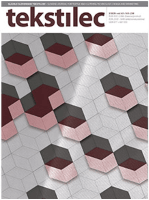
Tekstilec
Unraveling the threads of multidisciplinary textile research.Tekstilec, an esteemed journal published by University of Ljubljana, Slovenia, has been a prominent platform in the fields of textiles, engineering, and industrial management since its establishment in 1989. With an Open Access model since 2000, the journal ensures that scholarly research is accessible to a global audience, fostering the dissemination of knowledge across various disciplines. While its impact factor remains unlisted, Tekstilec holds respectable rankings within its categorized quartiles, featuring a 2023 Q4 ranking in Business and International Management and Q3 rankings in multiple engineering and material science categories. This positions the journal as a vital resource for researchers, professionals, and students seeking insights into textiles and their multidisciplinary applications. With a commitment to advancing knowledge in its scope, Tekstilec invites contributions that explore innovative research and practical developments, encouraging collaboration within the global academic community.
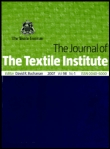
JOURNAL OF THE TEXTILE INSTITUTE
Transforming textile challenges into innovative solutions.The Journal of the Textile Institute, published by Taylor & Francis Ltd, is a renowned academic journal that has been pivotal in advancing research and innovation in the textile industry since its inception in 1967. With a robust ISSN of 0040-5000 and an E-ISSN of 1754-2340, this journal serves as a vital resource for researchers, practitioners, and students interested in the multifaceted aspects of textiles, encompassing agricultural and biological sciences, industrial engineering, and materials science. With a respectable impact factor reflected in its Q2 quartile rankings in the 2023 categories of Agricultural and Biological Sciences, Industrial and Manufacturing Engineering, and Polymers and Plastics, the journal stands out in the academic landscape—offering high-quality, peer-reviewed articles that foster knowledge exchange and innovation. Researchers and professionals alike will find this journal's commitment to exploring contemporary challenges and technological advancements ultimately invaluable for both academic inquiries and practical applications in the textile field.

Macedonian Journal of Chemistry and Chemical engineering
Advancing the Frontiers of Chemistry and Chemical EngineeringMacedonian Journal of Chemistry and Chemical Engineering, published by the SOC CHEMISTS TECHNOLOGISTS MACEDONIA, is a premier Open Access journal established in 2008, with a focus on disseminating innovative research in the fields of Chemistry and Chemical Engineering. With its ISSN 1857-5552 and E-ISSN 1857-5625, the journal has rapidly gained recognition, achieving a Q3 category rank in both Chemical Engineering and Chemistry for 2023, reflecting its contribution to academic debate and practical advancements within these disciplines. The journal is dedicated to fostering an accessible platform for researchers, practitioners, and students, allowing them to share their findings and insights with a global audience. Situated in Skopje, Macedonia, the journal welcomes submissions that explore a wide array of topics, including but not limited to, theoretical models, experimental studies, and technological innovations. Since transitioning to an Open Access model in 2014, the journal has enhanced its reach and impact, providing unrestricted access to all published articles, thereby encouraging collaboration and knowledge sharing across the scientific community.

Journal of Cotton Science
Connecting Science and Agriculture in Cotton DevelopmentJournal of Cotton Science is a vital publication dedicated to advancing the understanding and innovative practices within the cotton industry. Published by the NATIONAL COTTON COUNCIL OF AMERICA, this journal has been a key resource for researchers, agronomists, and industry professionals since its inception in 1997, with contributions spanning various aspects of cotton science, including breeding, genetics, pest management, and environmental impact. With an ISSN of 1523-6919 and an E-ISSN of 1524-3303, it currently holds a Q3 ranking in the Materials Science (miscellaneous) category as per the 2023 quartiles. While the journal operates without open access, it remains accessible to professionals looking to contribute to its expanding reach. The Journal of Cotton Science plays a pivotal role in disseminating cutting-edge research and fostering collaboration among scientists, positioning itself as an essential resource in the ongoing exploration of cotton's material science applications. Stay up to date with the latest findings and developments that shape the future of this crucial agricultural product.
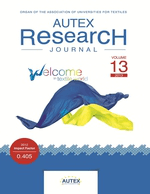
Autex Research Journal
Advancing textile innovation through open access research.Autex Research Journal is a distinguished *open access* academic journal published by WALTER DE GRUYTER GMBH, specializing in the interdisciplinary fields of Industrial and Manufacturing Engineering, Management of Technology and Innovation, and Materials Science. Since its inception in 1999, the journal has fostered scholarly communication by offering a platform for innovative research and advancements in textile technology and related disciplines. With an impact factor indicative of a solid academic reputation, the journal holds a prestigious Q3 quartile ranking in multiple categories, including Industrial and Manufacturing Engineering and Management of Technology and Innovation, positioning it as a noteworthy resource for both researchers and practitioners. The journal embraces a global perspective, featuring a broad scope of topics pertinent to textile science, innovation management, and material application in various industries. Its open access format since 2012 ensures that the latest research is freely available to a wide audience, reinforcing its commitment to the advancement of knowledge and technology in textiles. Researchers, professionals, and students alike will find the *Autex Research Journal* an invaluable resource for staying updated on developments within these dynamic fields.
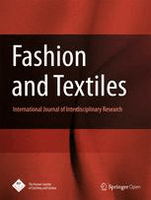
Fashion and Textiles
Championing Open Access in Fashion StudiesFashion and Textiles is a distinguished open-access journal published by Springer, focusing on the interdisciplinary realms surrounding fashion, textile innovation, and their socio-cultural implications. Since its inception in 2014, this journal has aimed to foster a deeper understanding of the rapidly evolving landscape of fashion and textiles through rigorous research and scholarly discourse. With an impressive Q1 ranking in Cultural Studies and prominent positions in several other categories, including Marketing and Social Psychology, the journal holds a significant place in its field. The journal, based in Singapore and accessible globally, provides authors and readers with a platform for high-quality research exchanges that influence both academia and industry practices. Open access since its launch, it has proven to be an essential resource for researchers, practitioners, and students who seek to contribute to and engage with the latest trends and developments in fashion and textiles.

npj Flexible Electronics
Innovating Tomorrow's Electronic Solutionsnpj Flexible Electronics, published by NATURE PORTFOLIO, is a premier open-access journal dedicated to the rapidly advancing field of flexible electronics. Since its inception in 2017, the journal has gained significant recognition, boasting impressive rankings as a Q1 journal in both Electrical and Electronic Engineering and Materials Science based on the 2023 metrics. With its E-ISSN 2397-4621, the journal serves as an essential platform for researchers, professionals, and students alike, facilitating the dissemination of high-quality research articles, reviews, and insights that drive innovation across multidisciplinary applications. Operating from its base in Berlin, Germany, and characterized by a robust impact within the academic community, npj Flexible Electronics plays a critical role in shaping the future of electronic materials and devices. The journal offers comprehensive open access options, ensuring that cutting-edge research is readily available and widely disseminated, fostering collaboration and engagement within the global research community.
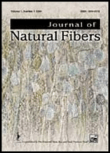
Journal of Natural Fibers
Pioneering Research in Sustainable MaterialsJournal of Natural Fibers is a pioneering open-access academic journal, published by Taylor & Francis Inc, that focuses on the emerging and multidisciplinary field of natural fibers. Established in 2004, the journal aims to advance the understanding and application of natural fibers in various industries, including materials science, textiles, and biocomposites. With an impressive impact factor and ranking in the 74th percentile among materials science journals, it is classified as Q2 in materials science (miscellaneous) as of 2023. The journal encourages innovative research and provides a platform for scientists, researchers, and professionals to share their findings in a rapidly evolving field. Notably, since 2023, it has embraced an open-access model, enhancing the accessibility of cutting-edge research to a broader audience. With contributions from a diverse range of countries and a commitment to high-quality peer review, the Journal of Natural Fibers is essential for those looking to explore the sustainable potentials and technological advancements of natural fibers.

Textile-Cloth and Culture
Weaving Insights, Cultivating CultureTextile-Cloth and Culture, published by ROUTLEDGE JOURNALS, TAYLOR & FRANCIS LTD, stands at the forefront of interdisciplinary research within the field of textile studies, integrating perspectives from arts and humanities. With an ISSN of 1475-9756 and an E-ISSN of 1751-8350, this journal fosters scholarly discourse and innovation from its United Kingdom base. Covering a wide array of topics related to textiles, cloth, and their cultural significance, Textile-Cloth and Culture is categorized in the prestigious Q2 quartile in Arts and Humanities (Miscellaneous) for 2023, holding a solid position in the Scopus ranking at #63 out of 173 journals in the general Arts and Humanities category. Since its inception in 2006, it has become a vital resource for researchers, professionals, and students, emphasizing the profound influence of textiles in cultural contexts. The journal's commitment to high-quality research provides readers with access to insightful studies, critical reviews, and innovative methodologies that further our understanding of the interplay between textiles and society, making it an essential journal for those aiming to stay updated in this dynamic field.